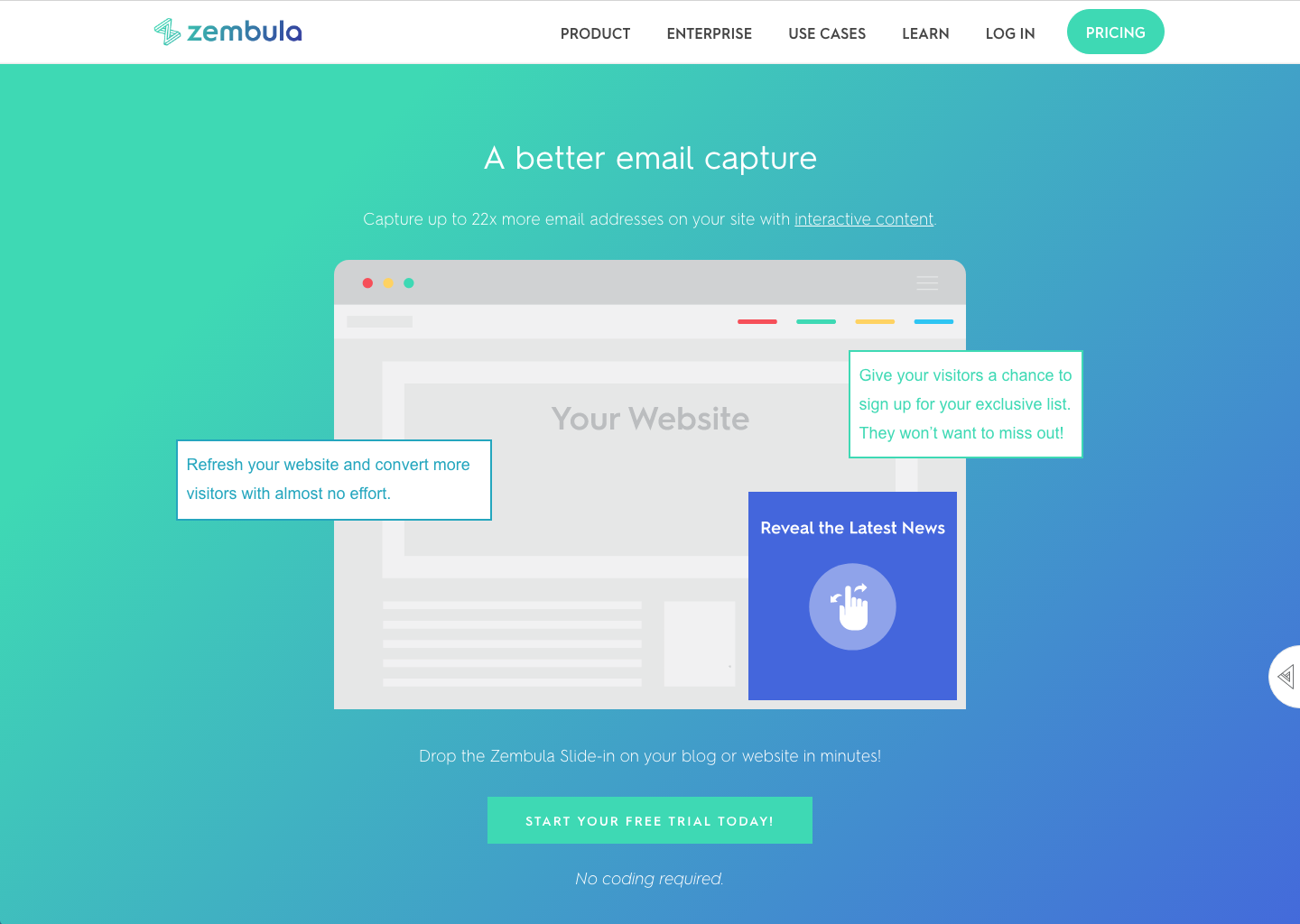Brand Colors: Do's and Don'ts
Welcome to the first installment of our new design-focused series, Pushing Pixels! We’ve thought for a long time that the specifics of reveal marketing needed their own design help and advice, so I’m going to give you all tips and tricks on good design for Zembula experiences and beyond!
In today’s post, we’ll talk about brand colors and how they impact most aspects of your company and your marketing. We’ll lay down some fundamental do’s and don’ts, as well as when it’s ok to break the rules.
Branding your Website:
Do- utilize a full palette of brand colors to reinforce your brand in the mind of your visitor.

Don’t– Hit your visitors over the head with your brand. Keep logos and taglines to a minimum, and make sure your brand colors aren’t too garish or conflicting. Also, please don’t be boring!

Branding your Platform:
Do– Use your brand colors inside your platform! Continuity assures your customers that they’re where they want to be in an unobtrusive way. (For great examples of color connotation, check out Canva’s great post about color palettes and brand colors.)

Don’t– Use the full spectrum of your brightest colors. Consider toning your brand colors down to a quieter, less eye-catching palette that still reinforces your brand but is less distracting to view often.
Using Color Psychology
Do– Utilize the concepts of color psychology to create exactly the impression and emotion you want your audience to take away. For example, blues and greens are calming, whereas pinks and oranges are energetic.

Don’t– Get too aggressive with your color choices, the last thing you want to leave your customers with are feelings of anger or depression! Be especially careful with reds, as they tend to signal our brains to “stop!”.
Branding your Email
Do- Utilize your brand colors across your email communications.

Don’t– get stuck in a rut. Be sure to switch up your email designs once in a while (including emphasizing other colors in your brand palette.)
Branding your Social Media
Do- Make sure some of your tweets, posts, and stories all utilize your brand colors. It can be as simple as a link to your blog in your main brand color or as complex as an entire Instagram story post using your full palette as backgrounds.
Don’t– Be obnoxious! Not everything you post needs to be fully branded, in fact, that’s quite a turn-off. People know who you are or they wouldn’t be following you in the first place. Keep your brand in the back of their minds, but be subtle about it!So after all these rules, when is it ok to break them? There are a couple major cases where brand color rules don’t necessarily apply, one of the biggest being in cross-promotions. Anywhere that incorporates another brand outside of your own can get tricky to navigate. In this case, it’s usually easier to choose a neutral palette for the promotion and let your logos do the talking instead of your brand colors.
For the other case, advertising is a big exception to most of the rules above. Not only do all of the various platforms have their own requirements but unless you’re retargeting an audience they may not be familiar enough with your brand for your brand colors to mean anything to them. Instead of sticking with a brand palette, consider more attention-grabbing combinations of colors, along with stellar copy and images, of course!
Have you used any of these tips? Or have you broken any of these rules?
If you’re interested in learning more about why we do what we do, check out our interactive content page.
Grow your business and total sales




